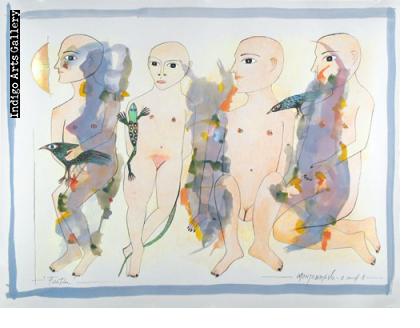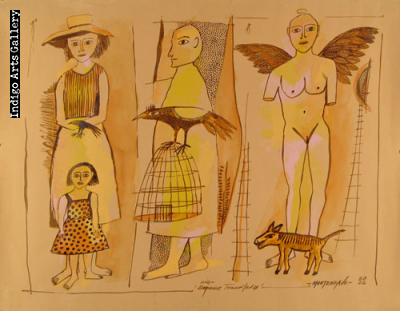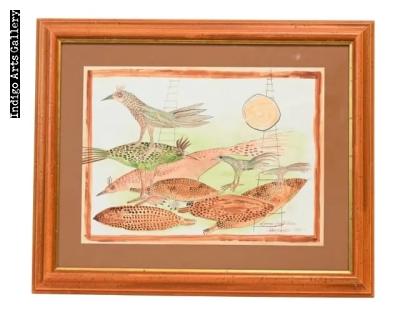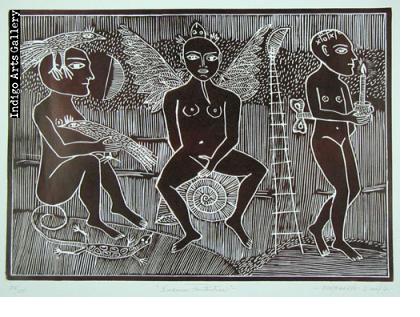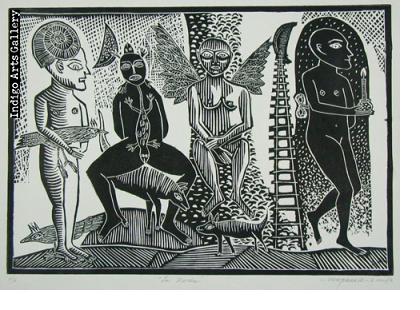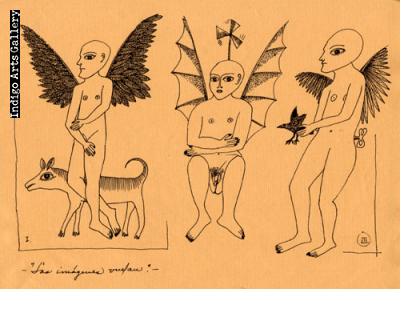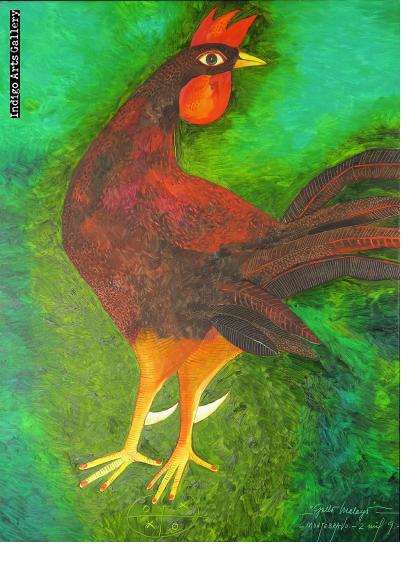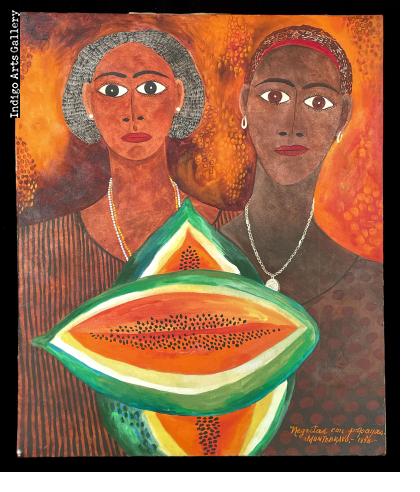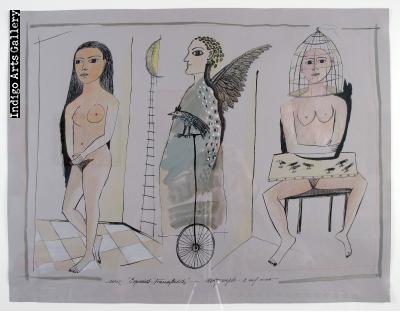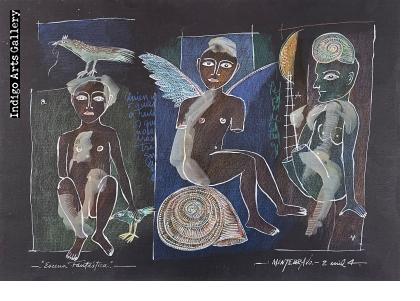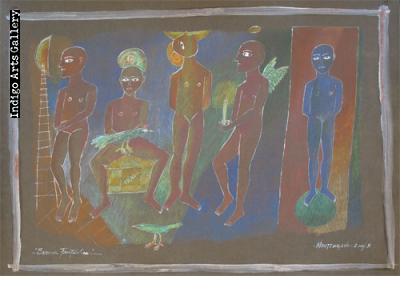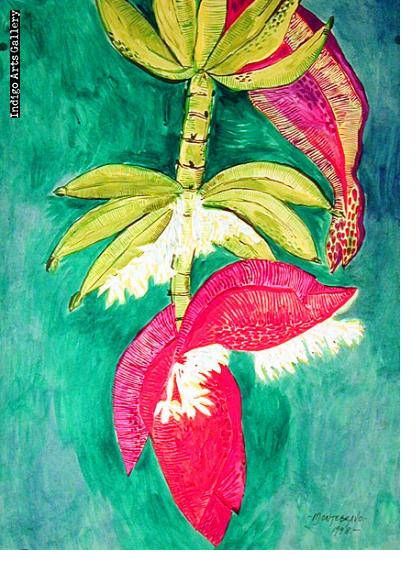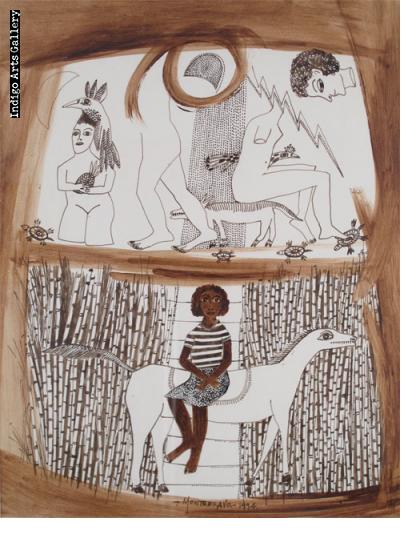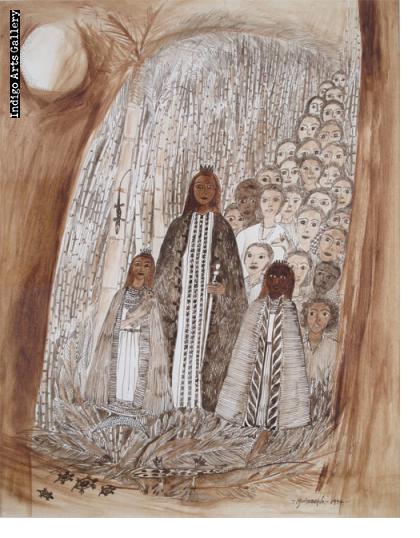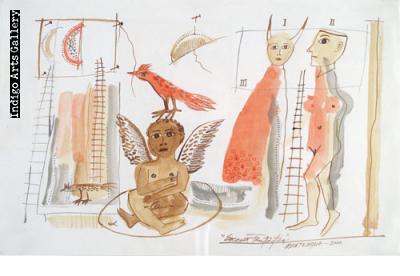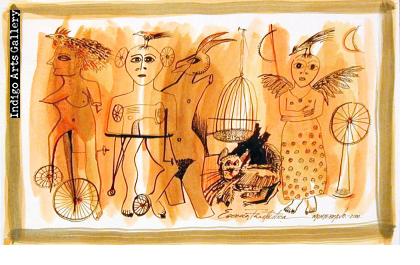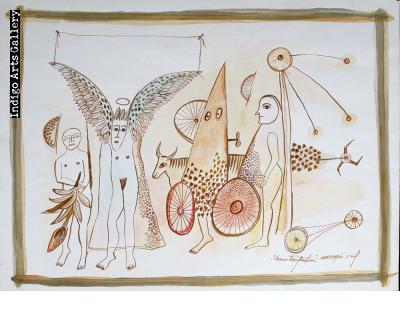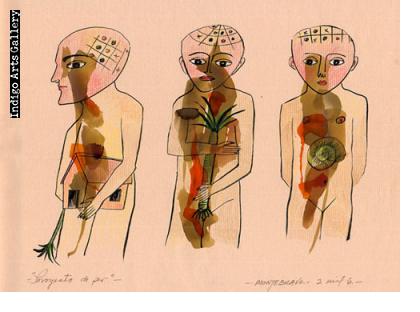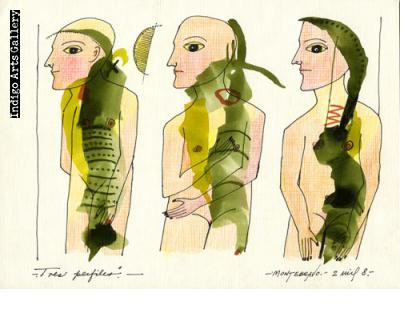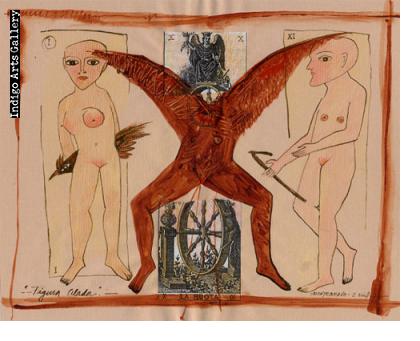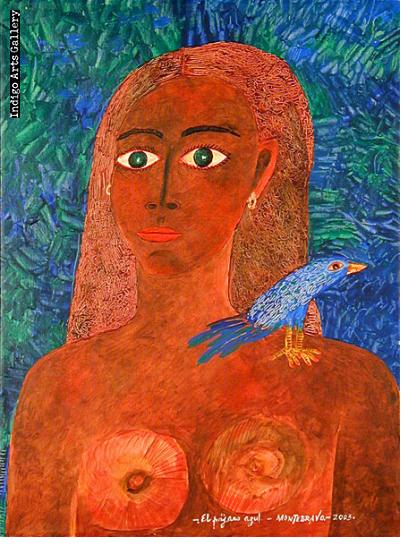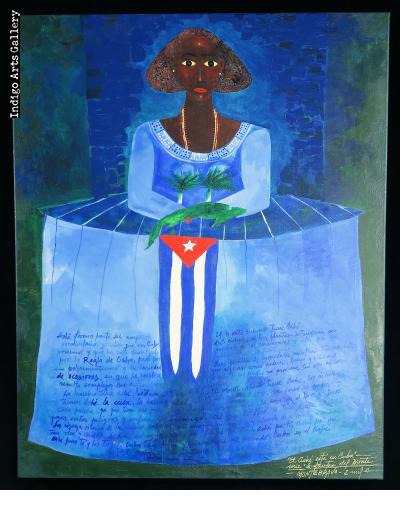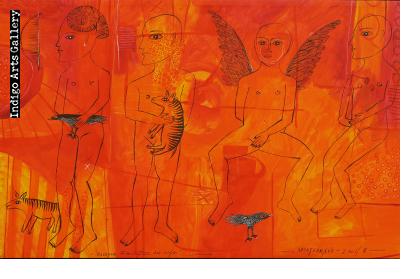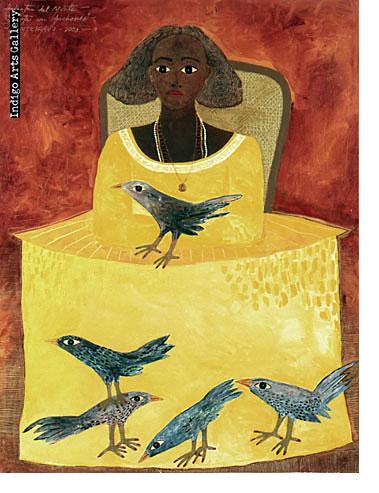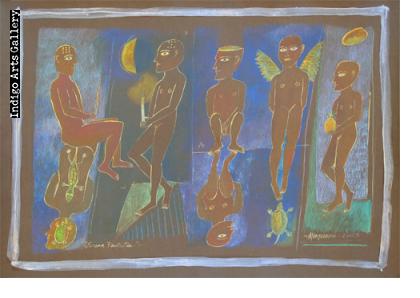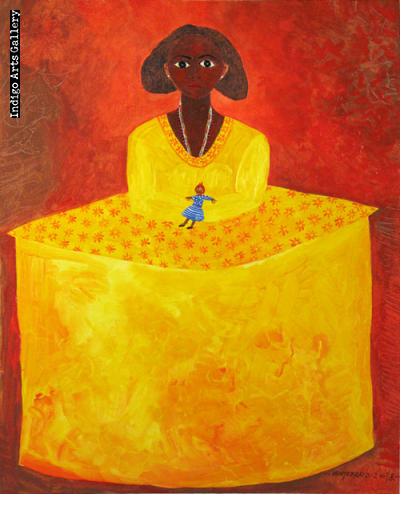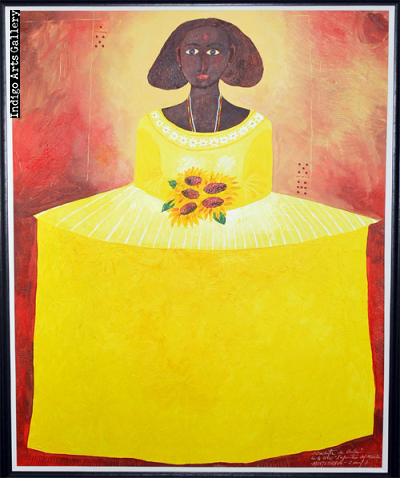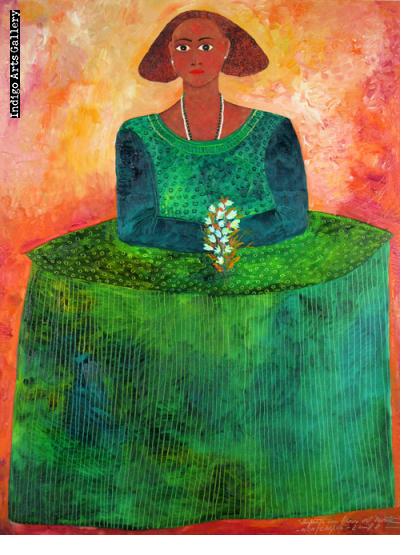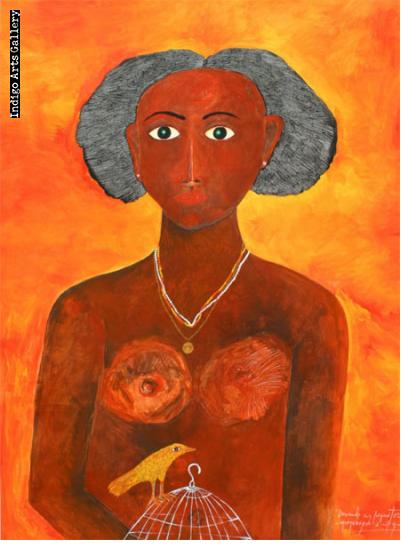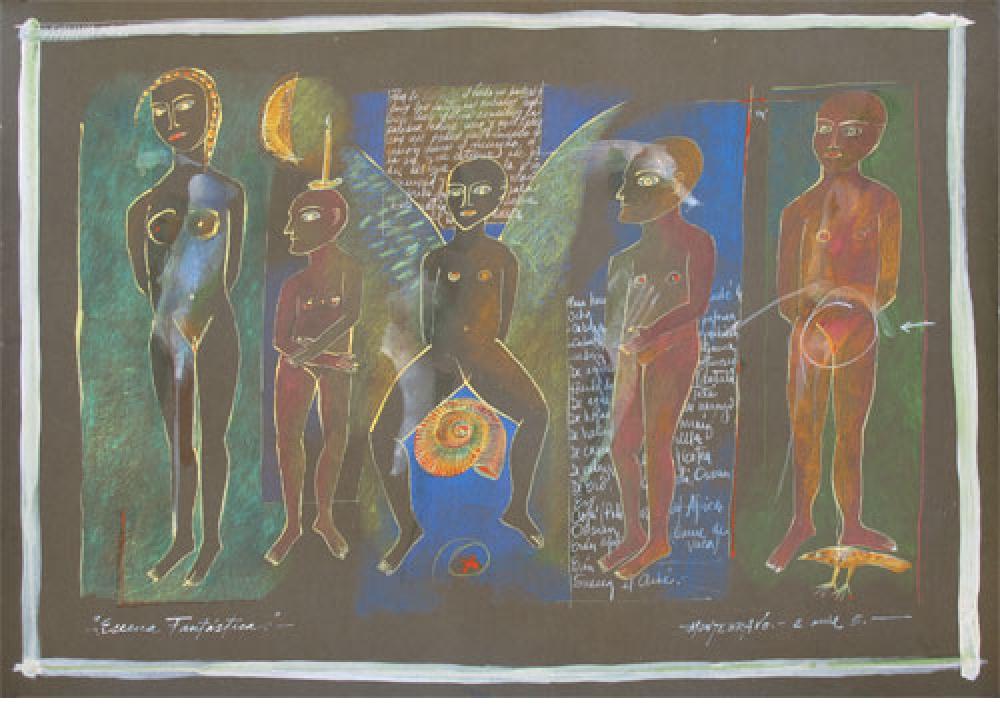
José Garcia Montebravo was one of Cuba's leading naif artists, with an international following. While he was self-taught as an artist, he was hardly naive in the English sense of the word. ‘Monte’ was a witty and sophisticated man with a sure, fluid line in pen or brush. In his relatively short career the Cienfuegos teacher turned artist created a rich self-contained world of myth and fantasy. Escenas Fantasticas presents paintings and works on paper dating from 1984 until shortly before his death in 2010.
Montebravo was born in Cienfuegos, Cuba on October 15, 1953, and lived there until his death in 2010. He was a university graduate, and for many years was a professor of geography at the Villa Clara Superior Pedagogical Institute. Though he had painted since he was a child, Montebravo only began to paint seriously in 1980. His first solo exhibition was in 1984. He exhibited in Europe and the United States as well as in Cuba both individually and collectively. He spent his career in the city of Cienfuegos, where he became a leading member of the art community and a mentor to many younger artists.
Montebravo’s work on paper and canvas was inspired by a vast curiosity. He had a keen knowledge of both natural history and art history and a particular interest in the Afro-Cuban religions such as Santeria and Palo Monte. Art historian Gerald Mouial devoted a chapter to Montebravo in his 2004 book, Magic Art in Cuba. As Mouial tells us, Montebravo identified with "El Monte" (“the Mount”), described by the late Cuban writer and anthropologist Lydia Cabrera as, "a sacred place where dead people, spirits, animals and plants live." "I carry that world inside me, the world of animals, plants and messengers of each person."
It was this mystical world that Montebravo portrayed in two long-running series of works on paper, entitled “Escenas Fantasticas” and “Espacios Transitados”. These “fantastic scenes” contain groups of figures – nudes, angels, virgins, and devils, juxtaposed with birds, animals, turtles, shells and botanical specimens. His most iconic works are his paintings of infantas (princesses). The women are dressed in great wedding-cake dresses in tribute to Velasquez’s “Las Meninas”. But in a slyly Afro-Cuban twist most have black faces and wear the distinctive colors, necklaces and other attributes of the orishas, the Santeria deities to whom they are dedicated. They are not the orishas themselves, Montebravo explained, they are “the daughters of the mount, El Monte”.
Montebravo has been featured in exhibits at Indigo Arts Gallery since 1999. In 2002 he visited our Philadelphia gallery for a solo show. In the course of a day at the gallery, working on the floor, as he always did, he painted a lovely “Infanta de Filadelfia”.
The following is a sample of the work in our Montebravo exhibit. Go to our Montebravo Gallery Page to see our full collection.

